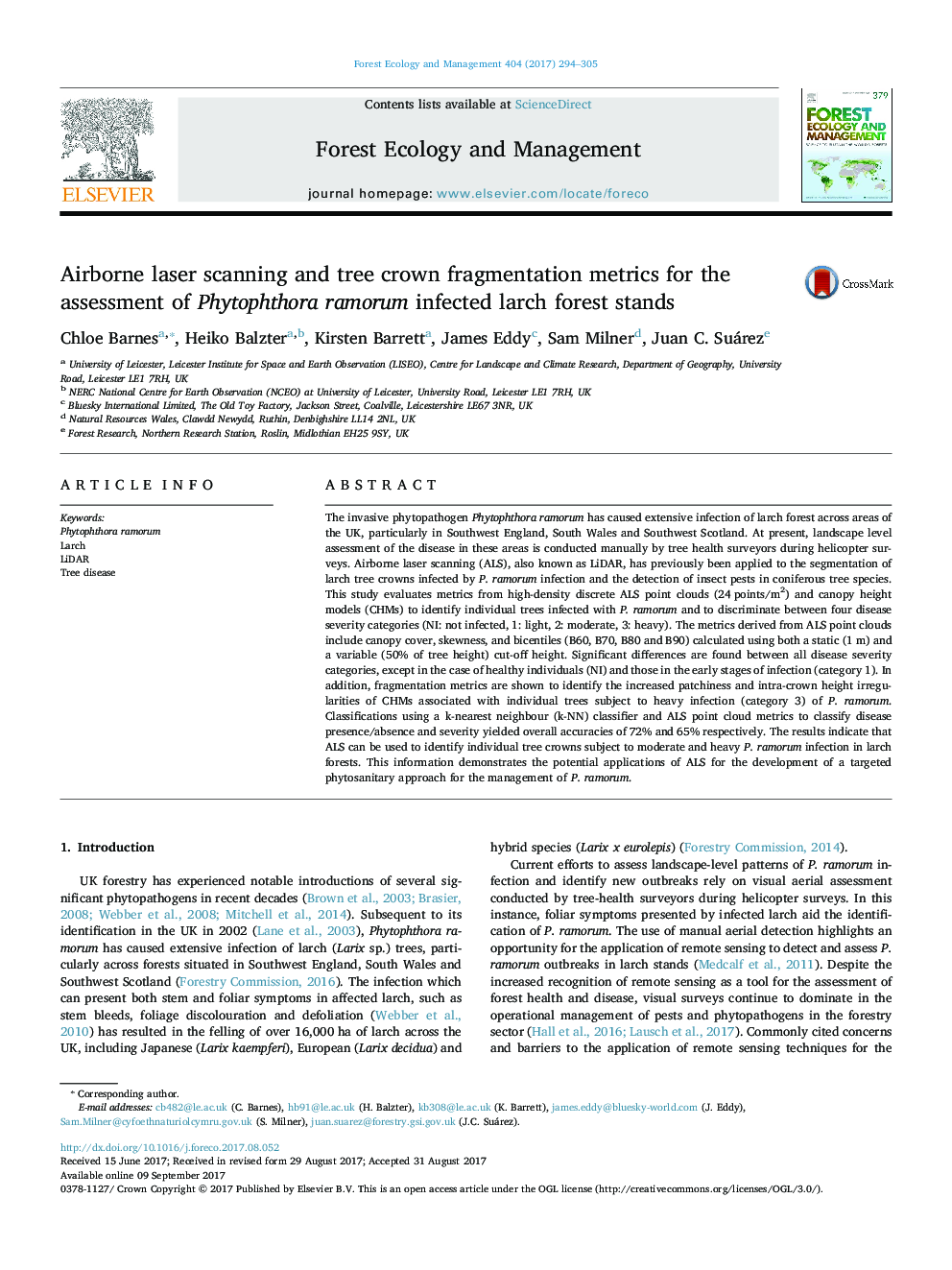| Article ID | Journal | Published Year | Pages | File Type |
|---|---|---|---|---|
| 6459175 | Forest Ecology and Management | 2017 | 12 Pages |
â¢Airborne laser scanning applied to Phytophthora ramorum assessment in larch trees.â¢Moderate and severe infection detected with point cloud metrics.â¢Severe infection detected with canopy height model fragmentation metrics.
The invasive phytopathogen Phytophthora ramorum has caused extensive infection of larch forest across areas of the UK, particularly in Southwest England, South Wales and Southwest Scotland. At present, landscape level assessment of the disease in these areas is conducted manually by tree health surveyors during helicopter surveys. Airborne laser scanning (ALS), also known as LiDAR, has previously been applied to the segmentation of larch tree crowns infected by P. ramorum infection and the detection of insect pests in coniferous tree species. This study evaluates metrics from high-density discrete ALS point clouds (24Â points/m2) and canopy height models (CHMs) to identify individual trees infected with P. ramorum and to discriminate between four disease severity categories (NI: not infected, 1: light, 2: moderate, 3: heavy). The metrics derived from ALS point clouds include canopy cover, skewness, and bicentiles (B60, B70, B80 and B90) calculated using both a static (1Â m) and a variable (50% of tree height) cut-off height. Significant differences are found between all disease severity categories, except in the case of healthy individuals (NI) and those in the early stages of infection (category 1). In addition, fragmentation metrics are shown to identify the increased patchiness and intra-crown height irregularities of CHMs associated with individual trees subject to heavy infection (category 3) of P. ramorum. Classifications using a k-nearest neighbour (k-NN) classifier and ALS point cloud metrics to classify disease presence/absence and severity yielded overall accuracies of 72% and 65% respectively. The results indicate that ALS can be used to identify individual tree crowns subject to moderate and heavy P. ramorum infection in larch forests. This information demonstrates the potential applications of ALS for the development of a targeted phytosanitary approach for the management of P. ramorum.
